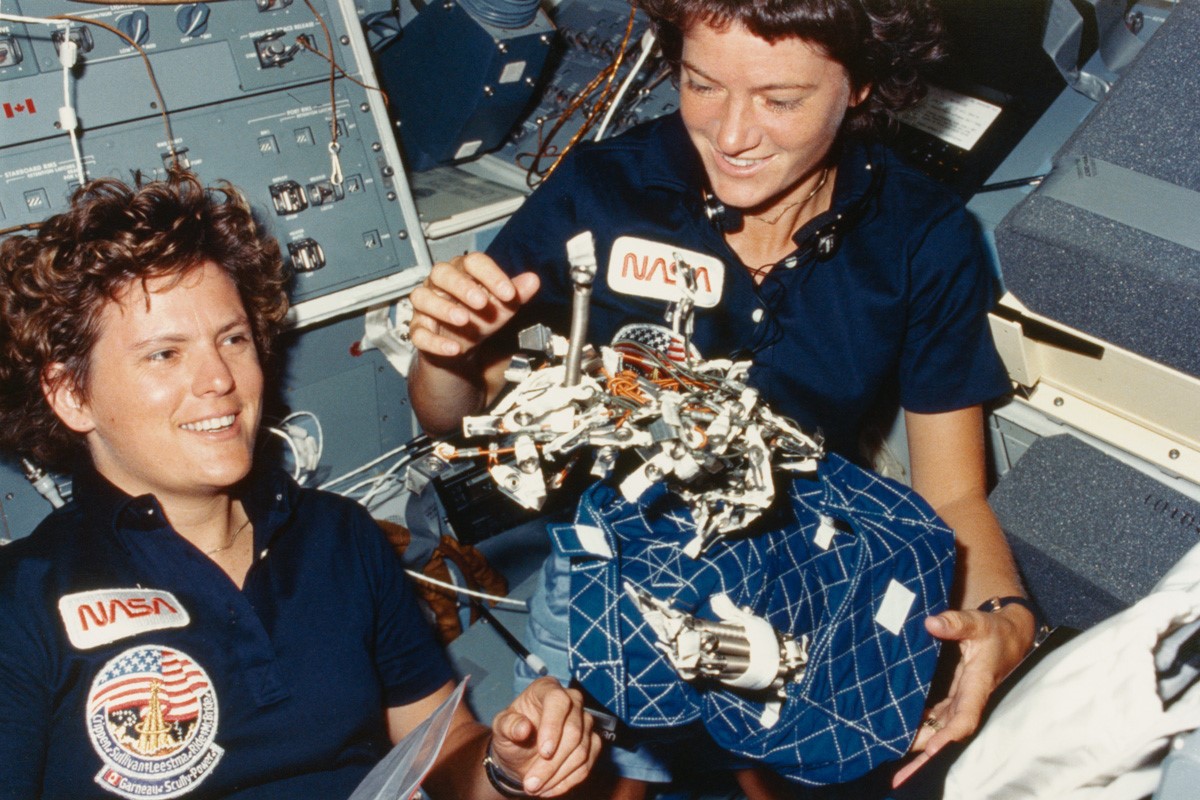On October 11, 1984, NASA astronaut Kathryn Sullivan made history as the first American woman to walk in space. This groundbreaking achievement paved the way for future female astronauts and inspired generations to come. Explore the details of Sullivan’s mission, the significance of her spacewalk, and how it contributed to the advancement of space exploration.

Kathryn Sullivan: Trailblazer in the Final Frontier
On October 11, 1984, Kathryn Sullivan, a NASA astronaut, became the first American woman to walk in space. This historic event was part of the space shuttle Challenger mission STS-41G, which launched on October 5 and returned to Earth on October 13. Sullivan, who had just celebrated her 33rd birthday eight days prior, conducted the groundbreaking spacewalk alongside fellow astronaut David Leetsma.
The mission’s primary objective was to demonstrate the ability to refuel orbiting satellites, a crucial capability for maintaining and extending the lifespan of these valuable assets. During the 3.5-hour spacewalk, Sullivan and Leetsma operated a specialized system designed to show the feasibility of this satellite refueling process. This pioneering work laid the foundation for future advancements in satellite servicing and the long-term sustainability of space-based technologies.
Breaking Barriers: The Significance of Sullivan’s Spacewalk
Kathryn Sullivan’s historic spacewalk marked a significant milestone in the exploration of the final frontier. As the first American woman to venture outside the confines of a spacecraft, she shattered the glass ceiling and paved the way for future generations of female astronauts.
Prior to Sullivan’s achievement, the spacewalking field had been dominated by men, with the first-ever spacewalk being conducted by Soviet cosmonaut Alexei Leonov in 1965. Sullivan’s groundbreaking accomplishment challenged traditional gender roles and inspired women around the world to pursue careers in astronautics and STEM fields.
Beyond its symbolic significance, Sullivan’s spacewalk also made important contributions to the advancement of space technology. By demonstrating the feasibility of satellite refueling, the mission laid the groundwork for future in-orbit servicing and maintenance capabilities, ultimately enhancing the longevity and reliability of space-based assets.
Furthermore, Sullivan’s subsequent space flights, including the deployment of the Hubble Space Telescope in 1990 and her role as payload commander on the STS-45 mission in 1992, cemented her legacy as a trailblazer and a true pioneer in the exploration of the cosmos.
The Legacy of Kathryn Sullivan: Inspiring Future Generations
Kathryn Sullivan’s historic spacewalk on October 11, 1984, not only shattered gender barriers in the space industry but also inspired countless individuals to pursue their dreams of exploring the final frontier. Her achievements paved the way for a more diverse and inclusive astronaut corps, empowering women and underrepresented groups to follow in her footsteps.
Today, Sullivan’s legacy continues to inspire and motivate aspiring astronauts, scientists, and engineers around the world. Her story serves as a testament to the power of determination, hard work, and the unwavering pursuit of knowledge. By breaking down traditional barriers and demonstrating the boundless potential of women in space exploration, Sullivan has forever changed the landscape of the industry, opening doors for future generations to reach new heights.
